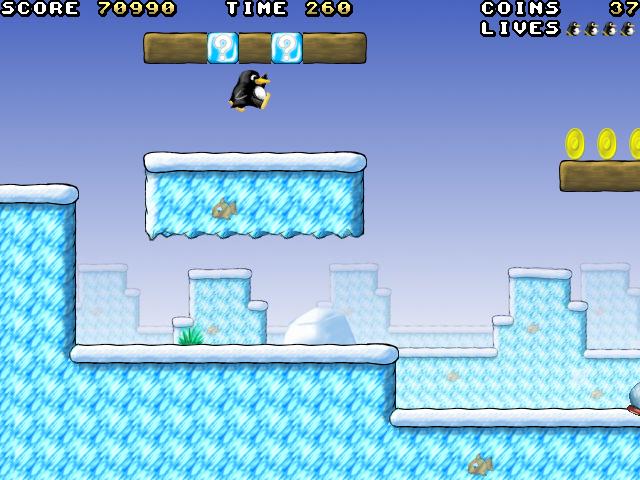|
Kid Dracula (1990 Video Game)
is a platform video game released by Konami in Japan for the Famicom on October 19, 1990. It is considered a parody of the ''Castlevania'' series. A version for mobile phones was released on 30 June 2006 in Japan. The game saw ports for the PlayStation 4, Xbox One, Nintendo Switch, and Microsoft Windows as part of the ''Castlevania Anniversary Collection'' which was released digitally on May 16, 2019 in all regions, with an English localization as ''Kid Dracula''. Plot The self-proclaimed Demon King, Kid Dracula, has awoken from a long sleep, only to discover that the demon Galamoth has challenged him. Swiping his father's cape, it is up to Kid Dracula to set out on an adventure to destroy the monster, and retake his throne. After battling through dangers and demons, Kid Dracula defeats Galamoth. This causes him to become famous throughout the land, with all the monsters in Transylvania showing up at his castle wanting to be his friend. Audio The soundtrack ''Konami Famico ... [...More Info...] [...Related Items...] OR: [Wikipedia] [Google] [Baidu] |
Konami
, commonly known as Konami, , is a Japanese multinational entertainment company and video game developer and video game publisher, publisher headquartered in Chūō, Tokyo, Chūō, Tokyo. The company also produces and distributes trading cards, anime, ''tokusatsu'', pachinko machines, slot machines, and List of Japanese arcade cabinets, arcade cabinets. It has casinos around the world, and operates health and physical fitness clubs across Japan. The company originated in 1969 as a jukebox rental and repair business in Toyonaka, Osaka, Japan, by Kagemasa Kōzuki, who remains the company's chairman. Additionally, Konami owns Bemani, known for ''Dance Dance Revolution'' and ''Beatmania'', as well as the assets of former game developer Hudson Soft, known for ''Bomberman'', ''Adventure Island (video game), Adventure Island'', ''Bonk (series), Bonk'', ''Bloody Roar'', and ''Star Soldier''. Konami is the twentieth-largest Lists of video game companies, game company in the world by re ... [...More Info...] [...Related Items...] OR: [Wikipedia] [Google] [Baidu] |
Famitsu
, formerly , is a line of Japanese Video game journalism, video game magazines published by Kadokawa Game Linkage (previously known as Gzbrain), a subsidiary of Kadokawa Corporation, Kadokawa. ''Famitsu'' is published in both weekly and monthly formats as well as in the form of special topical issues devoted to only one console, video game company, or other theme. the original ''Famitsu'' publication, is considered the most widely read and respected Video game journalism, video game news magazine in Japan. From October 28, 2011, the company began releasing the digital version of the magazine exclusively on BookWalker weekly. The name ''Famitsu'' is a Portmanteau#Japanese, portmanteau abbreviation of ''Famicom Tsūshin''; the word "Famicom" itself comes from a portmanteau abbreviation of "Nintendo Entertainment System, Family Computer", the dominant video game console in Japan when the magazine was first published in the 1980s. History , a computer game magazine, started in 1982 ... [...More Info...] [...Related Items...] OR: [Wikipedia] [Google] [Baidu] |
Video Games About Children
Video is an electronic medium for the recording, copying, playback, broadcasting, and display of moving visual media. Video was first developed for mechanical television systems, which were quickly replaced by cathode-ray tube (CRT) systems, which, in turn, were replaced by flat-panel displays of several types. Video systems vary in display resolution, aspect ratio, refresh rate, color capabilities, and other qualities. Analog and digital variants exist and can be carried on a variety of media, including radio broadcasts, magnetic tape, optical discs, computer files, and network streaming. Etymology The word ''video'' comes from the Latin verb ''video,'' meaning to see or ''videre''. And as a noun, "that which is displayed on a (television) screen," History Analog video Video developed from facsimile systems developed in the mid-19th century. Early mechanical video scanners, such as the Nipkow disk, were patented as early as 1884, however, it took several decades b ... [...More Info...] [...Related Items...] OR: [Wikipedia] [Google] [Baidu] |
Single-player Video Games
A single-player video game is a video game where input from only one player is expected throughout the gameplay. Video games in general can feature several game modes, including single-player modes designed to be played by a single player in addition to multi-player modes. Most modern console games, PC games and arcade games are designed so that they can be played by a single player; although many of these games have modes that allow two or more players to play (not necessarily simultaneously), very few actually require more than one player for the game to be played. The '' Unreal Tournament'' series is one example of such. History The earliest video games, such as '' Tennis for Two'' (1958), '' Spacewar!'' (1962), and '' Pong'' (1972), were symmetrical games designed to be played by two players. Single-player games gained popularity only after this, with early titles such as '' Speed Race'' (1974) and '' Space Invaders'' (1978). The reason for this, according to Raph Ko ... [...More Info...] [...Related Items...] OR: [Wikipedia] [Google] [Baidu] |
Platformers
A platformer (also called a platform game, and sometimes a jump 'n' run game) is a subgenre of action game in which the core objective is to move the player character between points in an environment. Platform games are characterized by levels with uneven terrain and suspended platforms that require jumping and climbing to traverse. Other acrobatic maneuvers may factor into the gameplay, such as swinging from vines or grappling hooks, jumping off walls, gliding through the air, or bouncing from springboards or trampolines. The genre started with the 1980 arcade video game ''Space Panic'', which has ladders but not jumping. ''Donkey Kong (arcade game), Donkey Kong'', released in 1981, established a template for what were initially called "climbing games". ''Donkey Kong'' inspired many clones and games with similar elements, such as ''Miner 2049er'' (1982) and ''Kangaroo (video game), Kangaroo'' (1982), while the Sega arcade game ''Congo Bongo'' (1983) adds a third dimension via I ... [...More Info...] [...Related Items...] OR: [Wikipedia] [Google] [Baidu] |
Parody Video Games
A parody is a creative work designed to imitate, comment on, and/or mock its subject by means of satirical or ironic imitation. Often its subject is an original work or some aspect of it (theme/content, author, style, etc), but a parody can also be about a real-life person (e.g. a politician), event, or movement (e.g. the French Revolution or 1960s counterculture). Literary scholar Professor Simon Dentith defines parody as "any cultural practice which provides a relatively polemical allusive imitation of another cultural production or practice". The literary theorist Linda Hutcheon said "parody ... is imitation, not always at the expense of the parodied text." Parody may be found in art or culture, including literature, music, theater, television and film, animation, and gaming. The writer and critic John Gross observes in his ''Oxford Book of Parodies'', that parody seems to flourish on territory somewhere between pastiche ("a composition in another artist's manner, without sat ... [...More Info...] [...Related Items...] OR: [Wikipedia] [Google] [Baidu] |
Nintendo Entertainment System Games
The Nintendo Entertainment System, Family Computer/Nintendo Entertainment System has a library of ' officially licensed games released during their lifespans, plus 7 official multicarts and 2 championship cartridges. Of these, 672 were released exclusively in Japan, 187 were released exclusively in North America, and 19 were released exclusively in PAL countries. Worldwide, 521 games were released. Its launch games for the Famicom were ''Donkey Kong (1981 video game), Donkey Kong'', ''Donkey Kong Jr.'', and ''Popeye (video game), Popeye''. Only first-party titles were available upon launch, but Nintendo started a licensing program the following year that allowed third-party companies such as Namco, Hudson Soft, Taito, Konami, Bandai, and Capcom to create titles and produce their own cartridges for the Famicom in exchange for royalty payments; Nintendo later revised the program to mandate itself as the producer of all cartridges while carrying it with the console outside Japan. ... [...More Info...] [...Related Items...] OR: [Wikipedia] [Google] [Baidu] |
Mobile Games
A mobile game is a video game that is typically played on a mobile phone. The term also refers to all games that are played on any portable device, including from mobile phone (feature phone or smartphone), tablet, PDA to handheld game console, portable media player or graphing calculator, with and without network availability. The earliest known game on a mobile phone was a Tetris variant on the Hagenuk MT-2000 device from 1994. In 1997, Nokia launched ''Snake''. ''Snake'', which was pre-installed in most mobile devices manufactured by Nokia for a couple of years, has since become one of the most played games, at one point found on more than 350 million devices worldwide. Mobile devices became more computationally advanced allowing for downloading of games, though these were initially limited to phone carriers' own stores. Mobile gaming grew greatly with the development of app stores in 2008, such as the iOS App Store from Apple. As the first mobile content marketplac ... [...More Info...] [...Related Items...] OR: [Wikipedia] [Google] [Baidu] |
1990s Horror Video Games
Year 199 ( CXCIX) was a common year starting on Monday of the Julian calendar. At the time, it was sometimes known as year 952 ''Ab urbe condita''. The denomination 199 for this year has been used since the early medieval period, when the Anno Domini calendar era became the prevalent method in Europe for naming years. Events By place Roman Empire * Mesopotamia is partitioned into two Roman provinces divided by the Euphrates, Mesopotamia and Osroene. * Emperor Septimius Severus lays siege to the city-state Hatra in Central-Mesopotamia, but fails to capture the city despite breaching the walls. * Two new legions, I Parthica and III Parthica, are formed as a permanent garrison. China * Battle of Yijing: Chinese warlord Yuan Shao defeats Gongsun Zan. Korea * Geodeung succeeds Suro of Geumgwan Gaya, as king of the Korean kingdom of Gaya (traditional date). By topic Religion * Pope Zephyrinus succeeds Pope Victor I, as the 15th pope. Births Valerian Roman ... [...More Info...] [...Related Items...] OR: [Wikipedia] [Google] [Baidu] |
1990 Video Games
Year 199 ( CXCIX) was a common year starting on Monday of the Julian calendar. At the time, it was sometimes known as year 952 ''Ab urbe condita''. The denomination 199 for this year has been used since the early medieval period, when the Anno Domini calendar era became the prevalent method in Europe for naming years. Events By place Roman Empire * Mesopotamia is partitioned into two Roman provinces divided by the Euphrates, Mesopotamia and Osroene. * Emperor Septimius Severus lays siege to the city-state Hatra in Central-Mesopotamia, but fails to capture the city despite breaching the walls. * Two new legions, I Parthica and III Parthica, are formed as a permanent garrison. China * Battle of Yijing: Chinese warlord Yuan Shao defeats Gongsun Zan. Korea * Geodeung succeeds Suro of Geumgwan Gaya, as king of the Korean kingdom of Gaya (traditional date). By topic Religion * Pope Zephyrinus succeeds Pope Victor I, as the 15th pope. Births Valerian Ro ... [...More Info...] [...Related Items...] OR: [Wikipedia] [Google] [Baidu] |
Video Game Museum
This list of video game museums shows video game museums in the world. Video game museums Online video game museums See also * List of museums * Video game * List of computer museums A computer museum is devoted to the study of historic computer hardware and software, where a "museum" is a "permanent institution in the service of society and of its development, open to the public, which acquires, conserves, researches, commun ... References External links Internet Arcade– web-based library of arcade (coin-operated) video games from the 1970s through to the 1990s Software Library: MS-DOS Games {{DEFAULTSORT:Video game museums Lists of museums by subject Virtual museums ... [...More Info...] [...Related Items...] OR: [Wikipedia] [Google] [Baidu] |
Game Boy
The is a handheld game console developed by Nintendo, launched in the Japanese home market on April 21, 1989, followed by North America later that year and other territories from 1990 onwards. Following the success of the Game & Watch single-game handhelds, Nintendo developed the Game Boy to be more like a portable Video game console, console, with interchangeable cartridges. The concept proved highly successful, and the Game Boy family, Game Boy line became a cultural icon of the 1990s and early 2000s. The Game Boy was designed by the Nintendo Research & Development 1 team, led by Gunpei Yokoi and Satoru Okada. The device features a dot-matrix display, a D-pad, four game buttons, a single speaker, and uses Game Boy Game Pak, Game Pak cartridges. Its two-toned gray design included black, blue, and magenta accents, with softly rounded corners and a distinctive curved bottom-right edge. At launch in Japan it was sold as a standalone console, but in North America and Europe it came ... [...More Info...] [...Related Items...] OR: [Wikipedia] [Google] [Baidu] |






